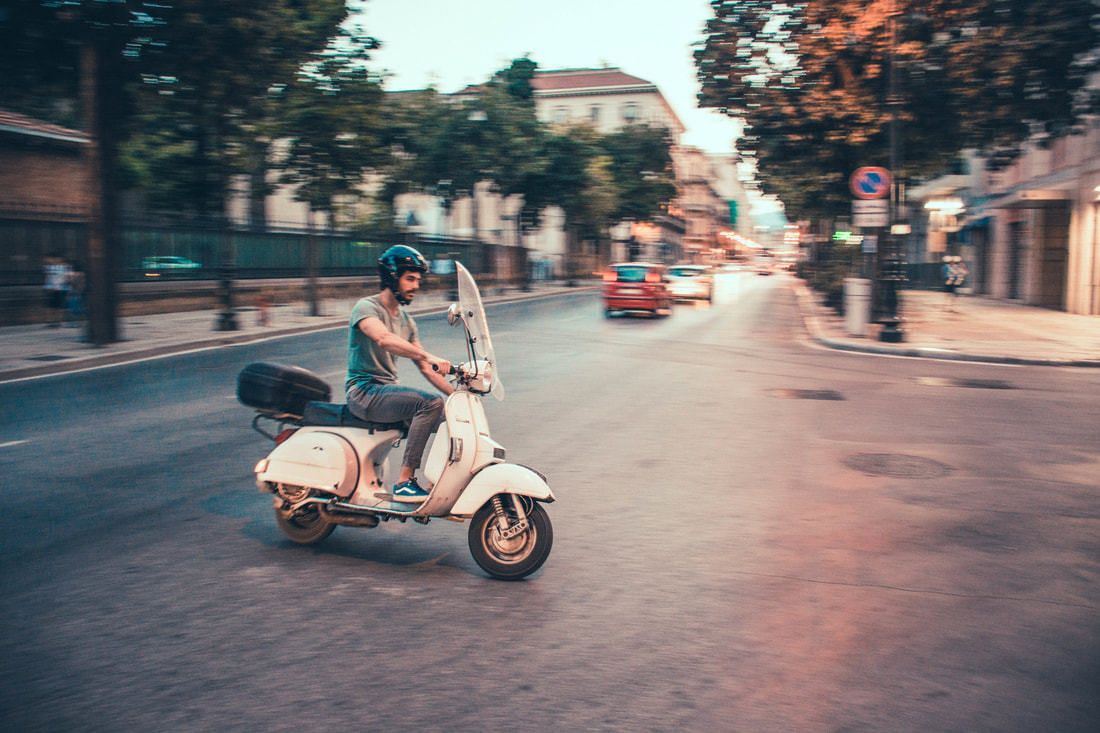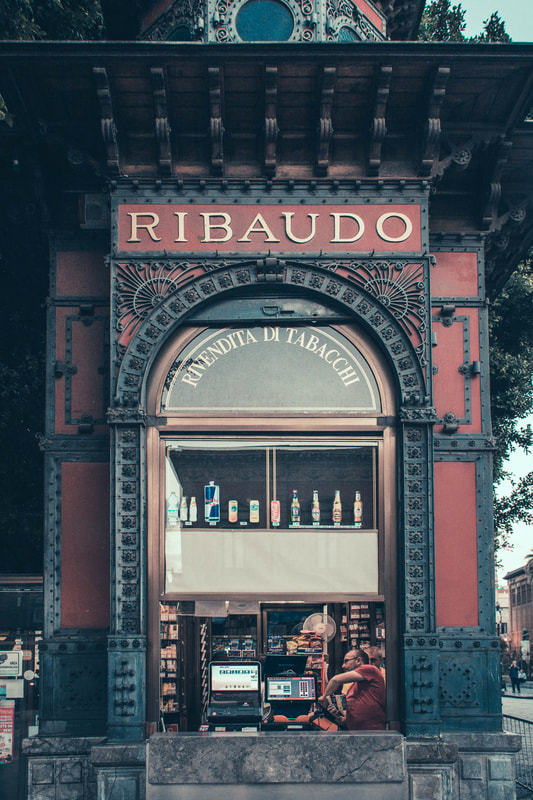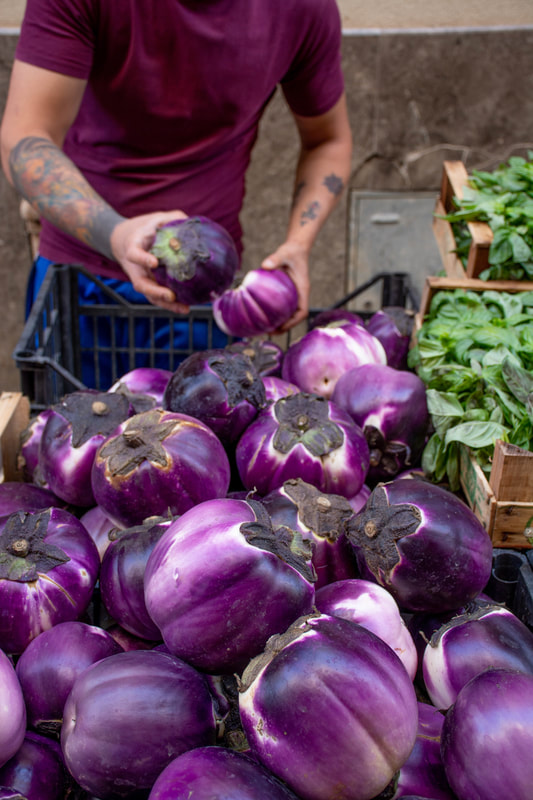|
Palermo ranks as one of the world’s top streetfood destinations, which means it’s time to give mainland Italy the boot and fly to Sicily instead. Here's how I ate my way to the heart of cannoli country. My first taste of Sicily is a palm-sized ball of deep-fried rice with a gooey pistachio pesto centre. It’s simultaneously soft and crunchy, perfectly spherical…and also, female. “Now pay attention,” says Francesca Incao, the fabulously expressive Italian guide taking me on a historical walking tour of Palermo. “For us, this food is a female named arancina!” She emphasises the “a” sound with a flourish of her slender hand, “and it is the shape of an orange. No arancino”. She almost hisses the last word. At the other end of Sicily, in the eastern town of Catania – home to the football club that’s the Palermo team’s fiercest rival – these saffron-flavoured street snacks are deemed male and named arancino. And that makes perfect sense when you observe that they’re made with a more pointed tip. Francesca continues rattling off her insider’s info: “Here in the capital, the toilets don’t smell like roses, we like to interrupt each other – it’s not impolite, just an attitude – and you should always carry a Kleenex.” She doesn’t elaborate on exactly why, but I have to agree that having a tissue is a good travel mantra wherever you go. Palermo is not an immediately enchanting city. You can walk blissfully down a charming cobbled street only to be confronted by a pile of rubbish, or step on one of many landmines left by stray dogs. It’s mad and messy – all to be expected in a city with a history of invasions that makes Game of Thrones seem tame. Sicily has hosted the Ancient Greeks, followed by Arab settlers, then the Normans, Spaniards and most recently, the notorious mafia (the first rule of the street: do not ask the locals about the mafia, unless you know you’re talking to a tour guide). Because it’s quite an overwhelming destination, I’d decided to enlist the help of Francesca, as well as Raffaella Di Trapani, to help me find the true heart of Sicily – one I hoped to find beneath the grimy façade. And the way to any heart? Always food. Raffaella grew up in Palermo, wears white pants without fear, rides a Vespa and is a Streaty food guide. In things Sicilian, I know she can be trusted. “Palermo is completely different from what it was five years ago. You might not think so, but it’s much cleaner and now you see a lot of pedestrian areas. Via Roma and Via Maqueda are pedestrian-only streets full of people enjoying the space. The mayor who changed the city, Leoluca Orlando, showed us a way to stand up against the mafia in our daily lives. It’s thanks to him that life in Palermo is now so enjoyable.” So enjoyable, in fact, that the city claimed the title Italian capital of culture in 2018. Technically, this island – the largest in the Mediterranean Sea – forms part of Italy, but Sicilians speak their own language, have their own parliament and, thanks to its turbulent history, they have their own distinct style of food. Fast, easy and affordable, the first item I stumble upon is the humble sfincione. This traditional pizza is thick and spongy – more of a flattened focacciastyle bread than the thinner, crustier Roman variety most tourists know. “It’s covered in onion, tomato sauce, oregano and topped with a single slice of tomato”, says Raffaella as I hand over two euros. The vendor pulls it from the glass case and grills it. Oil seeps through my napkin as I hold the slab and bite off an umami-packed mouthful. From here it’s a downhill slope for my waistline, but my senses soar in the euphoria of flavours I discover next. A sesame-studded bread roll loaded with panelle (chickpea flour fritters) and crocchè (potato croquettes flecked with mint) splashed with a squeeze of Sicilian lemon reminds me that the island is closer in some places to the continent of Africa than to Europe. Boiled octopus with fresh garnish, insalata di polpo, is a plate of pure colour and summons me back to the ocean. There are more arancina hiding their glorious dollop of ragù, molten cheese or simply butter, followed by the most adventurous dish of all, pani ca meusa, a beef spleen sandwich best found sizzling in pots of oil at the vibey Vucciria square on most evenings. Along with the food, I discover more historical tidbits, including how Sicily’s conquerors left their signature in the form of Palermo’s UNESCO World Heritage-listed Arab-Norman architecture. A wonderful example of the marriage between food and culture that harks back to the Middle Ages. At the time, many of the Arab mosques had been converted into cathedrals to fit the newly established Norman religion in Palermo. History tells of an important archbishop who was en route to visit a convent in the city. However, the garden and trees in this convent, La Martorana, were bare of fruit. So, the nuns created their own using marzipan in bright colours, hanging them from the branches for the honoured visit. You can still find these brightly coloured “fruit” sweets, called frutta Martorana, in some local cafés. It’s been a short and simple introduction, but Francesca and Raffaella have given me the road map I need to understand Sicily, one that I will use enthusiastically over the two weeks I plan to spend in Palermo on a digital nomad retreat with Find Your Pack. My Airbnb apartment is situated directly above a typical Italian-style café and every morning I smell the deadly aroma of baking pastries. From my balcony, I watch the morning commute on the street below before the sweet scents lure me into joining the throng downstairs. Locals tap-tap tiny espresso cups into saucers after a speedy swig while standing at the café counter. This, I discover, is how Sicily does coffee to go. No takeaway cappuccinos can be easily found here. For the most part I’m a sucker for anything featuring the readily available pistachio that’s so expensive back home and I inevitably choose a sticky pastry for breakfast. Some Sicilian streets are certainly more scenic than others. Bordering the bubblegum-blue Tyrrhenian Sea, Mondello beach is Palermo’s closest weekend escape and the sidewalks boast bright white cafés. When I step inside, I find gelato so succulent (suck-ulent is probably a better way to honour this summer essential) that it’s served on a sweetened bread roll – a sensational ice-cream sandwich known as gelato con brioche. Then there’s the path to Mount Pellegrino, which soars above the city (if, like me, you take pastries seriously, I recommend a hike up here to work them off). One morning I make the climb to watch the sun rise over the capital, passing prickly pears growing wild on the outskirts of the city – their freshly squeezed juice is available from vendors en route – and admiring the jacaranda trees in bloom that remind me of Joburg. At the top, I sit at a red plastic table outside a café below a cathedral built into the mountain’s rock face. I listen to church bells ring as I eat an unforgettable lemon-custard croissant baked just minutes before. Back in the city, I ignore the retail chain supermarkets in favour of the more charming alley bazaars of Ballarò and Capo markets, returning to the apartment with bundles of fresh basil, paper pockets of blood-red cherries, firm brinjals, enormous baby marrows and the treat of a freshly filled cannolo for my leisurely walk home. Another Sicilian staple, cannoli are crunchy, biscuit tubes filled with sweet ricotta cheese. Skip the already-filled, soggy ones in the display case. A good cannolo should have crunch! Although traditionally a winter dessert, cannoli are now available year-round. I make the most of this, washing it down with a drink from a water fountain. Even with all the maps in the world it would far take longer than two weeks to find the true heart of Sicily, but it sure found mine. The way there? Undoubtedly through my stomach. Eat like a local in PalermoPopular streetfood spots are concentrated around the bustling Vucciria, Ballarò and Capo markets. Here you can also find fresh local produce, seafood and spices. Go early to land the good stuff Antico Caffè Spinnato This café is open late and has free wifi. Find top-notch, freshly made cannoli and pastries here. I also loved the lunches served from a big tray and paid for according to weight, with melanzane, pasta and pizza on offer. spinnato.it Antica Focacceria Francesco With humble beginnings in 1834, this eatery has all the typical streetfood on offer in a trendy setting. Grab what you want inside, pay and choose a table in the sunny square outside. anticafocacceria.it/en Il Siciliano Aperitivo hour begins at 7 pm. It normally costs €10 for a cocktail (make it an Aperol Spritz) and a brimming platter of snacks to go with it. ilsicilianopalermo.it Touring Cafe Beach Just beside Mondello Beach, this café has buckets of gelato and fresh savoury buns loaded with cheeses and deli meats. touringcafebeach.placeweb.site Taverna Azzurra The spot for cheap drinks (try the local Marsala) and a vibey evening on the pavement. Nearby you’ll find plenty of food vendors at Piazza Caracciolo selling sandwiches and seafood. Find them on Facebook. Streaty Food Tours Explore the best streetfood Palermo has to offer with a local professional (the likes of Jamie Oliver have used their services). A tour will cost you €35. streaty.com This story first appeared in Taste Magazine.
2 Comments
22/6/2019 11:07:15 am
Great post. I absolutely loved Palermo and you've described it perfectly. Sadly we didn't try enough food and mainly ate at home. I wished I had. My waistline is glad I didn't!
Reply
Leave a Reply. |

























 RSS Feed
RSS Feed


